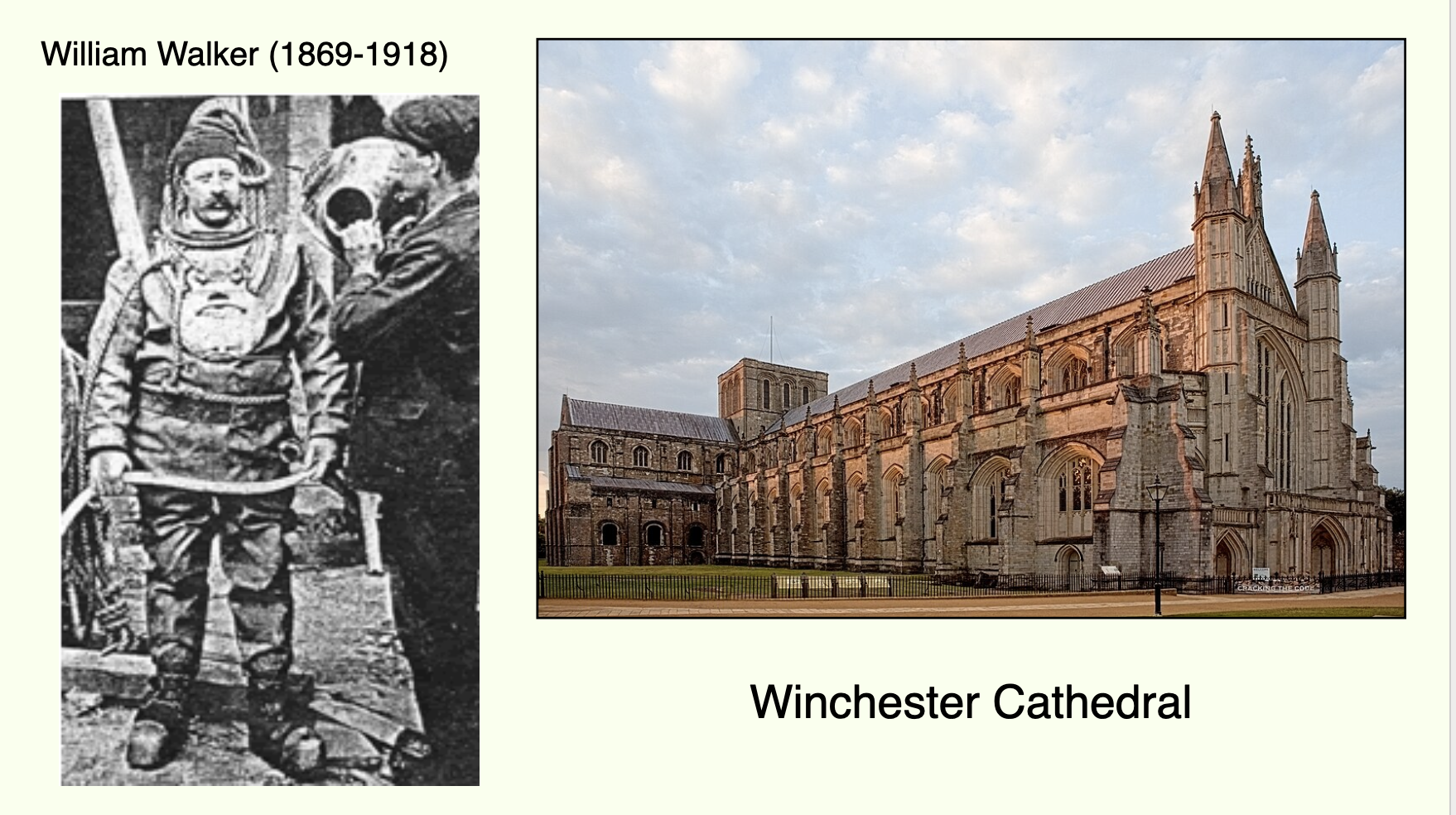ON THIS DAY: 30 October 1918 – William Walker, the diver who saved Winchester Cathedral in Hampshire, England, died of the Spanish flu.
Born in South London, Walker trained as a diver with Siebe Gorman, pioneers of modern diving equipment. Skilled and fearless, he was accustomed to working in some of the most difficult underwater conditions – a talent that would later prove vital to saving one of England’s greatest cathedrals.
Winchester Cathedral, begun in 1079 under Bishop Walkelin, is a masterpiece of Norman and Gothic architecture. Once the seat of medieval kings and bishops, it stood as a symbol of English history. Yet the Cathedral had one fatal flaw: it was built on marshland near the River Itchen. Its foundations rested on wooden piles driven deep into peat. Over the centuries, water seeped in, the timber rotted, and by 1905 the great building was on the brink of collapse.
Conventional underpinning methods were impossible because the foundations lay below the river’s water level. Enter William Walker. Between 1906 and 1912, he undertook the near-impossible task of stabilising the cathedral by working entirely underwater, in complete darkness.
Clad in a heavy copper diving helmet and a canvas suit, with air pumped from the surface, Walker descended into the murky depths beneath the cathedral. There, by touch alone, he placed 25,000 bags of concrete, 900,000 bricks, and 115,000 concrete blocks. Thanks to his efforts, the ground was solidified, allowing masons to continue underpinning above the waterline.
Walker’s heroic perseverance saved Winchester Cathedral. In 1912, King George V and Queen Mary personally thanked him, and he was appointed a Member of the Royal Victorian Order (MVO).
Tragically, William Walker’s life was cut short at just 49 when he succumbed to the Spanish flu pandemic in 1918. He is buried in Elmers End Cemetery, Beckenham, London.
Today, a statue of William Walker stands in Winchester Cathedral, a lasting tribute to the man who, quite literally, saved it from sinking into history.

